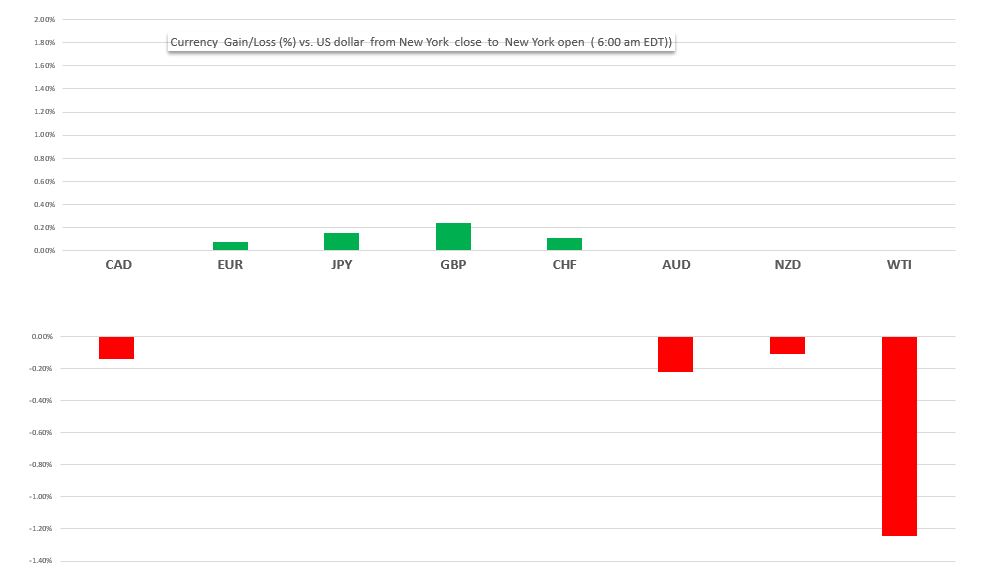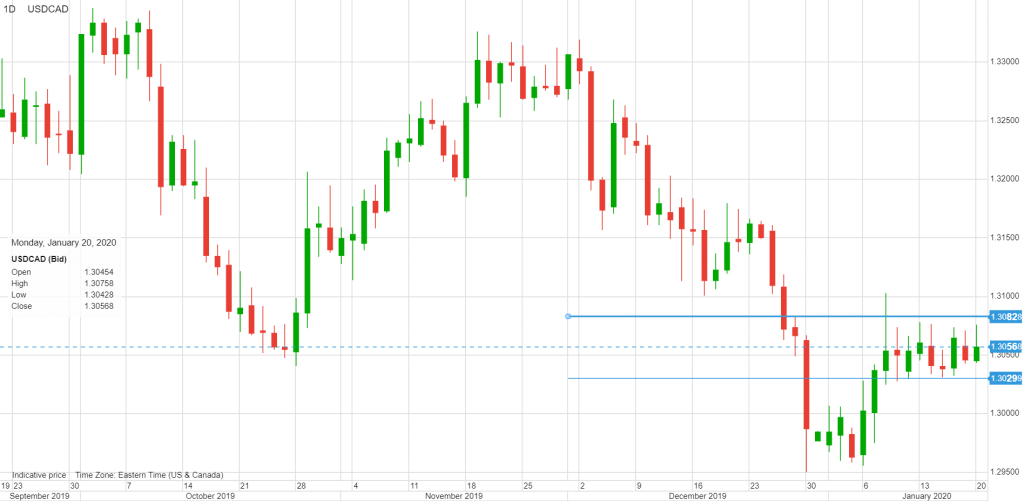
January 21, 2020
USDCAD open (6:00 am EST) 1.3065-69 Overnight Range 1.3047-1.3076
President Trump opened the 50th annual World Economic Forum in Davos, with his usual hyperbolic, bluster. He told the audience that “America is in the midst of an economic boom the likes of which the world has never seen before.” He added that the boom occurred despite the Fed. His remarks had zero impact on FX markets except to distract traders.
China health concerns are seeing some drift into risk aversion trades. The Wuhan coronavirus is not a Chinese knock-off off a quintessential Mexican beer, but another nasty SARS-like virus that has already spread to South Korea, Japan, and Thailand.
The US dollar opened in New York with a modest risk averse profile. It posted gains against the commodity currency bloc while losing ground against EUR, JPY, and CHF. GBP gained on the back of UK data.
FX overnight snapshot

Source: Saxo Bank/IFXA
EURUSD inched above the top of its overnight 1.1087-1.1105 trading range in early New York trading, underpinned by German and Eurozone ZEW survey results. German Economic and Current Situation Surveys were better than expected, which ZEW attributes to the settlement of the US/China trade dispute. US Treasury Secretary Steven Mnuchin warned that European countries would face tariffs if they continue to tax digital companies. The intraday technicals are bullish while prices are above1.1080, looking for a break above 1.1120 to target 1.1160.
GBPUSD got a much need boost from UK employment data which through a monkey wrench into predictions that the Bank of England would cut interest rates next week. GBPUSD climbed from 1.2997 to 1.3054 in New York. However, the short term technicals are bearish while prices are below 1.3090.
USDJPY snapped its uptrend rally when prices broke below 110.10 overnight. Risk-averse traders sold USDJPY on fears of a widespread break-out of the Wuhan coronavirus due to Chinese New Year travel. The Bank of Japan left interest rates unchanged at -0.1% while making minor adjustments to their 2020 forecasts. The inflation forecast ticked 0.1% lower while growth nudged 0.2% higher. BoJ Governor Kuroda said, “risks are skewed to the downside.”
AUDUSD suffered from coronavirus fears which knocked prices from 0.6879 to 0.6846 in Asia, but those fears disappeared in Europe and prices bounced back to 0.6862 after New York opened. Australia CPI and employment data are due tomorrow, and if the forecasts for weak results are correct, AUDUSD could drop to its November low of 0.6750. NZDUSD mirrored AUDUSD price action.
Oil prices slid from $58.67/barrel at Monday’s close to $57.82 overnight. Traders are ignoring Libya’s export problems as global crude inventories remain high.
USDCAD tracked AUDUSD and NZDUSD and opened in Toronto at the top of its overnight range. The domestic currency is also suffering from broad US dollar strength and the drop in WTI oil prices. Traders are looking ahead to Wednesday and hoping that the Bank of Canada Monetary Policy Report and Governor Poloz’s press conference provides some market direction.
USDCAD Technical Outlook
The intraday technicals are unchanged. USDCAD is stuck in a narrow 1.3030-1.3080 trading range, with a break either side eventually yielding about 0.0070 points. For today, USDCAD support is at 1.3030 and 1.2990. Resistance is at 1.3080 and 1.3110. Today’s Range 1.3030-1.3090Chart: USDCAD daily

Source: Saxo Bank





